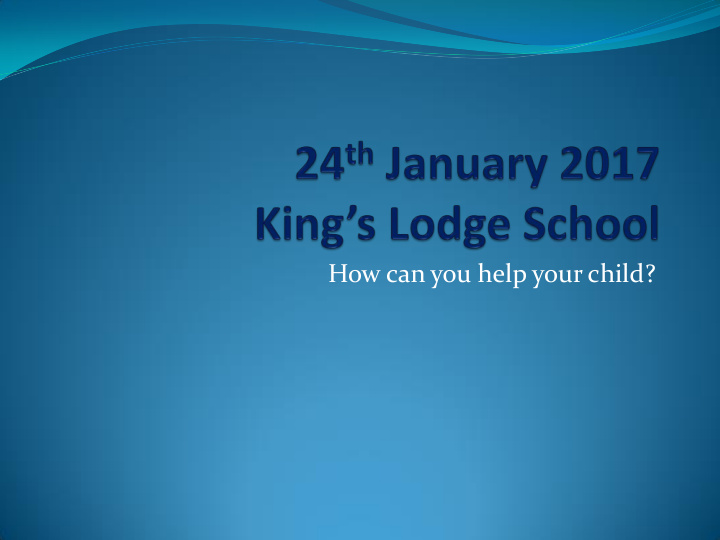



How can you help your child?
Reading Records Reading at home is of great importance in enabling children to make progress with their reading. Throughout the school, children are encouraged to establish/continue a habit of daily reading and are given books to take home and read. Regularly writing comments into your child’s Reading Record… Regular Reading Club… Constructive Reading comments to aid assessment…
Constructive Reading Record comments to aid assessment - It was such a pleasure to listen to Jane read. She was able to identify and read the words independently. - He spotted a full stop! - She noticed that the print font size is much smaller than in her last book. - Read the book enthusiastically, clearly and with understanding. - Fluent and confident, showing enthusiasm and enjoyment. - Confused "b" and "d" sounds at the beginning of the word "dig" but self-corrected when read within the context of the sentence. Wonderful! " - Recognised the exclamation mark! - Tends to mistake "was" with "saw."
How can you help your child?
Ear arly y Year ars s Cu Curric iculum ulum Number er Number and Place Addition and Sharing Doubling and Value subtraction Halving -Repres esen enta tation tion of -Need d to be able e to -Need d to be able e to -Need d to be able e to number ers as value ue work out 1 less ss, 1 solve e proble lems ms solve e proble lems ms -Need d to reli liably more than any around sharing g around doubli ling g count and order given en number er and halvi ving g number ers to 20 -Need d to be able e to -Need d to be able e to add or subtract ract 2 say number ers s before e digit it number ers or after or er each -Need d to b o be able e to o -1st, 2nd, 3rd count on or back k to find d the answer er
Addi Ad ditio ion n an and S d Sub ubtractio raction Jo Joinin ing g tw two groups s to togeth ther er and recou ountin nting/ g/ ta takin ing g away y the ones th s Jo Joinin ing g tw two groups s to togeth ther er and countin ting g on/bac back k
Probl blem em solvin ing g – multipl iplica icati tion n an and d di division ion Solvi lving g problems lems, includin luding g doubl blin ing, halvin ving g and sharin ing g using g concr crete ete resour ource ces. . Making/sharing equal groups and counting the total.
How w can an you u he help lp at at ho home?
How can you help your child?
Phonics Read and write all the single letter sounds and: ck, zz, ff, ss, ll, qu, ch, sh, th, ng, ai, ee, igh, oa, oo, ar, or, ur, ow, oi, ear, air, ure, er, ay, ea, ie, ou, ir, wh, au, oe, ue, ew, oy, aw, ph, a-e, e-e, i-e, o-e, u-e. Read and spell Year 1 Common Exception words: the, a, do , to, today, of, said, says, are, were, was, I, you, your, they, be, he, me, she, we, no, go, so, by, my, there, here, where, love, come, some, one, once, ask, friend, school, put, push, pull, full, house, our. Spell: Days of the week. Numbers to twenty. Phonics screening check in June.
Handwriting a b c d e f g h i j k l m n o p q r s t u v w x y z A B C D E F G H I J K L M N O P Q R S T U V W X Y Z
Maths Number: Counting to 100+ forwards and backwards from different numbers. Counting in 2s, 5s and 10s. Know 1 more or 1 less than a number to 100. Know 10 more or 10 less than a number to 100. Doubling numbers to 10+10. Addition and Subtraction: Using objects. Using a number line or 100 square. Putting the number in your head and counting on or back. Word problems – eg: I need 6 apples to make a pie. I have 2 apples in the fruit bowl. How many more apples do I need? Number bonds: Know the pairs of number that make 10 and 20, including the addition and subtraction facts.
How can you help your child?
KS1: YEAR 2
Recommend
More recommend